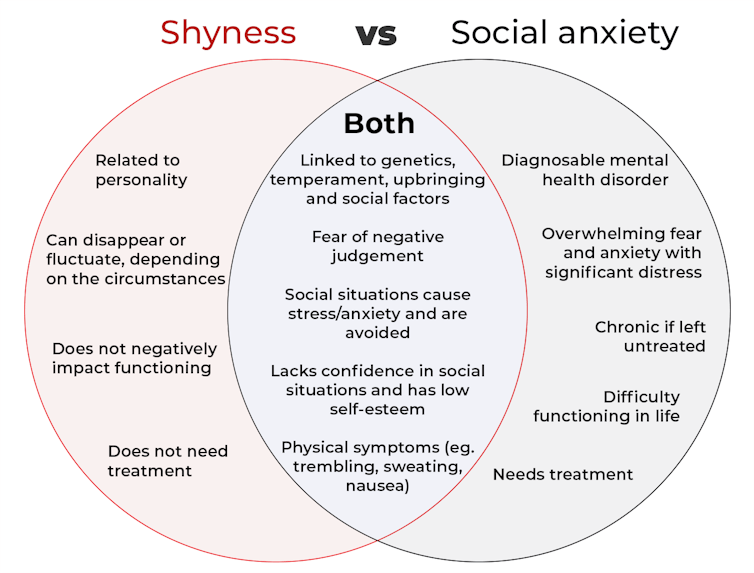
What's the difference? is a new editorial product from The Conversation that explains the similarities and differences between commonly confused health and medical terms, and why they matter.
The terms 'shyness' and 'social anxiety' are often used interchangeably because they both involve feeling uncomfortable in social situations.
However, feeling shy, or having a shy personality, is not the same as experiencing social anxiety (short for 'social anxiety disorder').
Here are some of the similarities and differences, and what the distinction means.
How are they similar?
It can be normal to feel nervous or even stressed in new social situations or when interacting with new people. And everyone differs in how comfortable they feel when interacting with others.
For people who are shy or socially anxious, social situations can be very uncomfortable, stressful or even threatening. There can be a strong desire to avoid these situations.
People who are shy or socially anxious may respond with 'flight' (by withdrawing from the situation or avoiding it entirely), 'freeze' (by detaching themselves or feeling disconnected from their body), or 'fawn' (by trying to appease or placate others).
A complex interaction of biological and environmental factors is also thought to influence the development of shyness and social anxiety.
For example, both shy children and adults with social anxiety have neural circuits that respond strongly to stressful social situations, such as being excluded or left out.


Top Comments